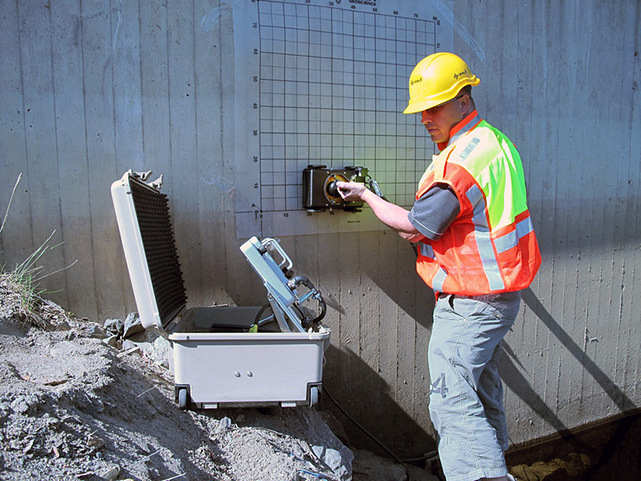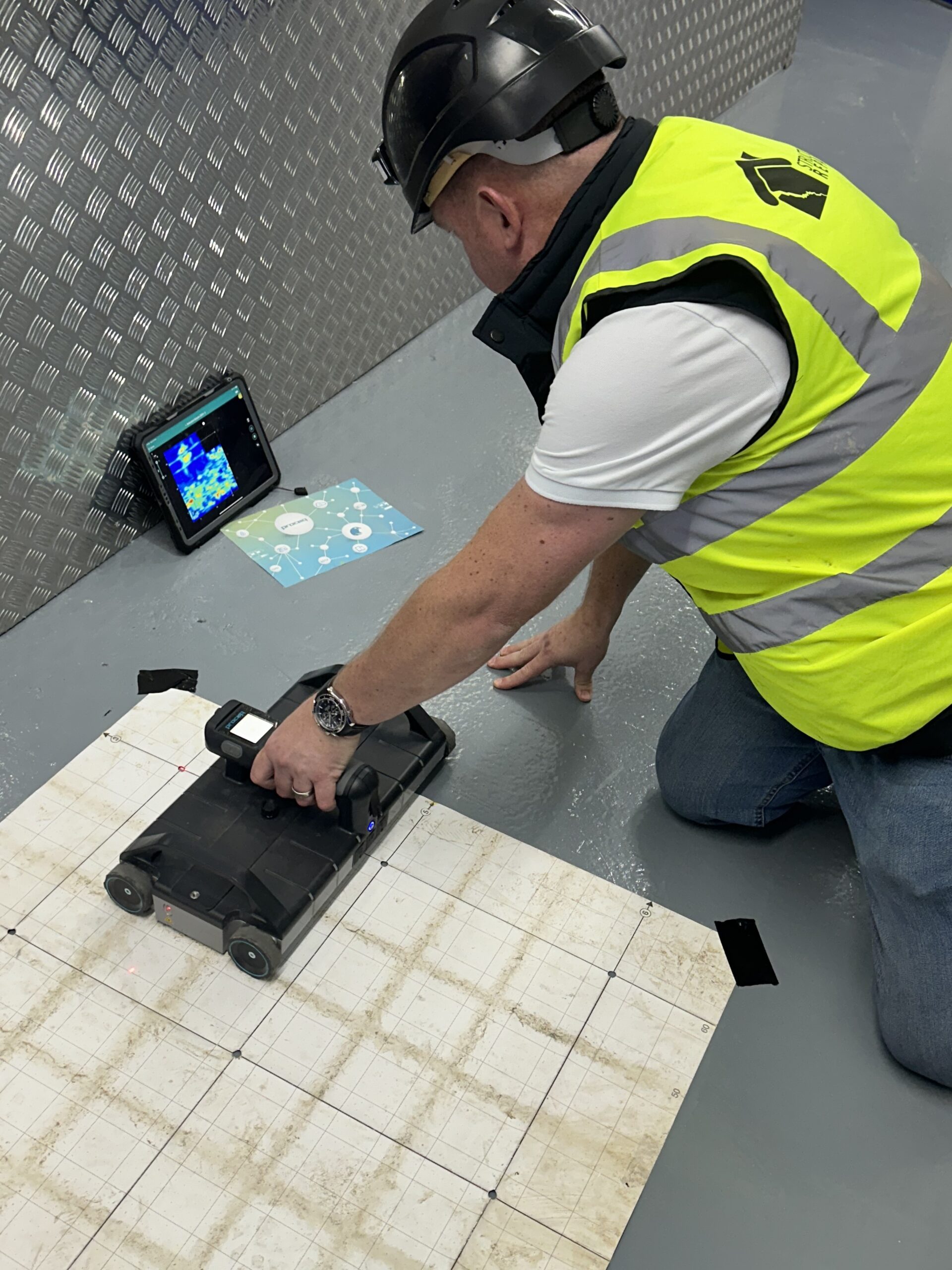Harness the Strategic Side of Concrete Scanning for Unparalleled Task Success and Quality Control
In the world of modern building and framework advancement, the utilization of concrete scanning technology has actually emerged as a pivotal device for guaranteeing task success and preserving top quality standards. The true power of concrete scanning exists not just in its ability to boost project results yet also in its capacity to reinvent conventional practices, establishing a new standard for accuracy and performance in the building and construction sector.
The Relevance of Concrete Scanning
Concrete scanning is a crucial step in building tasks to make certain the safety and honesty of structures. By utilizing numerous scanning innovations such as Ground Penetrating Radar (GPR) and electro-magnetic induction, building and construction groups can non-destructively examine the subsurface of concrete frameworks to recognize potential dangers like rebar, avenues, or post-tension cables. This information is essential for project specialists, managers, and engineers to make educated decisions and avoid pricey blunders during the building procedure.
Among the primary reasons that concrete scanning is so vital is its capacity to avoid mishaps and injuries on the construction website. Mistakenly reducing via a real-time electric channel or damaging post-tension cables can have catastrophic consequences, not just in regards to security but additionally in regards to project hold-ups and monetary implications. By performing detailed concrete scanning before any kind of boring, reducing, or coring activities, building and construction groups can alleviate dangers and create a more secure working environment for everyone entailed.
Along with safety factors to consider, concrete scanning likewise plays a crucial function in ensuring the long-term sturdiness and quality of the framework. By spotting any kind of flaws or anomalies concealed beneath the surface area, such as spaces or delamination, very early intervention can be implemented to address these concerns before they escalate right into more substantial troubles. Inevitably, purchasing concrete scanning is an aggressive step that can conserve time, money, and sources in the long run, while also promoting the highest requirements of building quality.
Advanced Innovation for Precise Results

Furthermore, 3D scanning modern technologies use an extensive sight of the subsurface environment by developing detailed digital versions. These models supply valuable insights right into the structural stability of concrete components and help in determining possible weaknesses prior to they escalate into significant issues. By integrating these advanced technologies right into concrete scanning practices, building groups can streamline process, minimize job hold-ups, and make certain the general top quality and success of the project. The accuracy and efficiency supplied by these tools contribute significantly to the task's success by helping with notified improving and decision-making high quality assurance steps.
Enhancing Project Performance and Timelines

Moreover, concrete scanning makes it possible for groups to identify structural weak points and prospective threats early on, enabling prompt removal and avoiding mishaps that might derail task timelines. The real-time information supplied by scanning tools facilitates notified decision-making, bring about smoother coordination amongst various professions and stakeholders. This enhanced partnership minimizes problems, improves performance, and eventually speeds up task delivery.
Moreover, by proactively dealing with concerns with concrete scanning, building teams can comply with timetables much more effectively, minimize downtime, and optimize resource appropriation. The ability to detect surprise obstacles and confirm architectural integrity efficiently adds to overall task effectiveness and timelines, ensuring effective outcomes and client satisfaction.
Ensuring Security and Risk Reduction

Threat reduction techniques can be enhanced through the thorough info offered by concrete scanning, allowing job teams to make informed decisions that reduce the chance of unanticipated occurrences. Furthermore, by accurately drawing up subsurface conditions, service providers can stay clear of pricey rework, delays, and damages to existing frameworks, additionally adding to overall project security and success. Carrying out concrete scanning as a regular method not just makes sure a more secure workplace but likewise instills confidence in stakeholders concerning the task's dedication to top quality and threat management.
Quality Control Via Concrete Scanning
Concrete scanning plays a pivotal function in maintaining top quality assurance criteria within building and construction projects. By making use of innovative scanning modern technologies such as Ground Permeating Radar (GPR) and Concrete X-ray, project managers and engineers can make sure the integrity and high quality of concrete frameworks. Via concrete scanning, potential problems, such as gaps, cracks, or enhancing bar congestion, can be found non-destructively, enabling prompt treatments to keep the architectural integrity of the project.
Quality control with concrete scanning not only assists in recognizing existing issues but also enables positive procedures to stop future troubles that could compromise the safety and durability visit this page of the framework. By conducting detailed scans at essential phases of building and construction, groups can verify the accuracy of architectural plans, validate the placement of important components, and resolve any variances immediately. This aggressive approach decreases rework, lowers costly delays, and ultimately brings about the delivery of premium, long lasting frameworks that fulfill or go beyond market criteria.
Final Thought
In conclusion, concrete scanning plays a critical duty in making sure job success, effectiveness, safety, and high quality guarantee. The tactical edge given by concrete scanning enables for proactive threat mitigation and boosts general project monitoring.
In the world of modern building and construction and facilities development, the use of concrete scanning modern technology has actually emerged as a critical device for making sure project success and preserving high quality requirements. By integrating these sophisticated innovations into concrete scanning practices, construction groups can simplify operations, minimize job delays, and ensure the total top quality and success of the job.Provided the imperative nature of task performance and timelines in building management, the emphasis currently moves towards making certain safety and security and mitigating dangers within the project environment.Concrete scanning plays an essential function in supporting quality guarantee criteria within building and construction jobs. By using advanced scanning modern technologies such as Ground Passing Through Radar (GPR) and Concrete X-ray, job managers and designers can guarantee the integrity and quality of concrete frameworks.